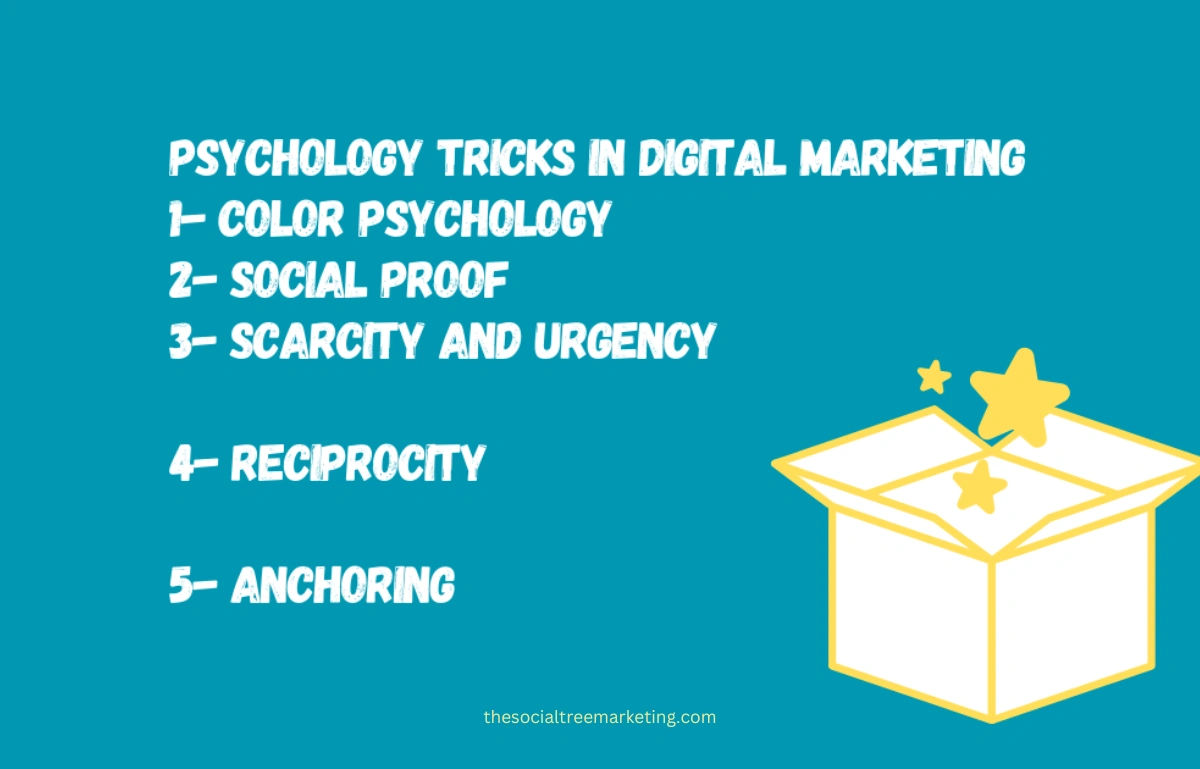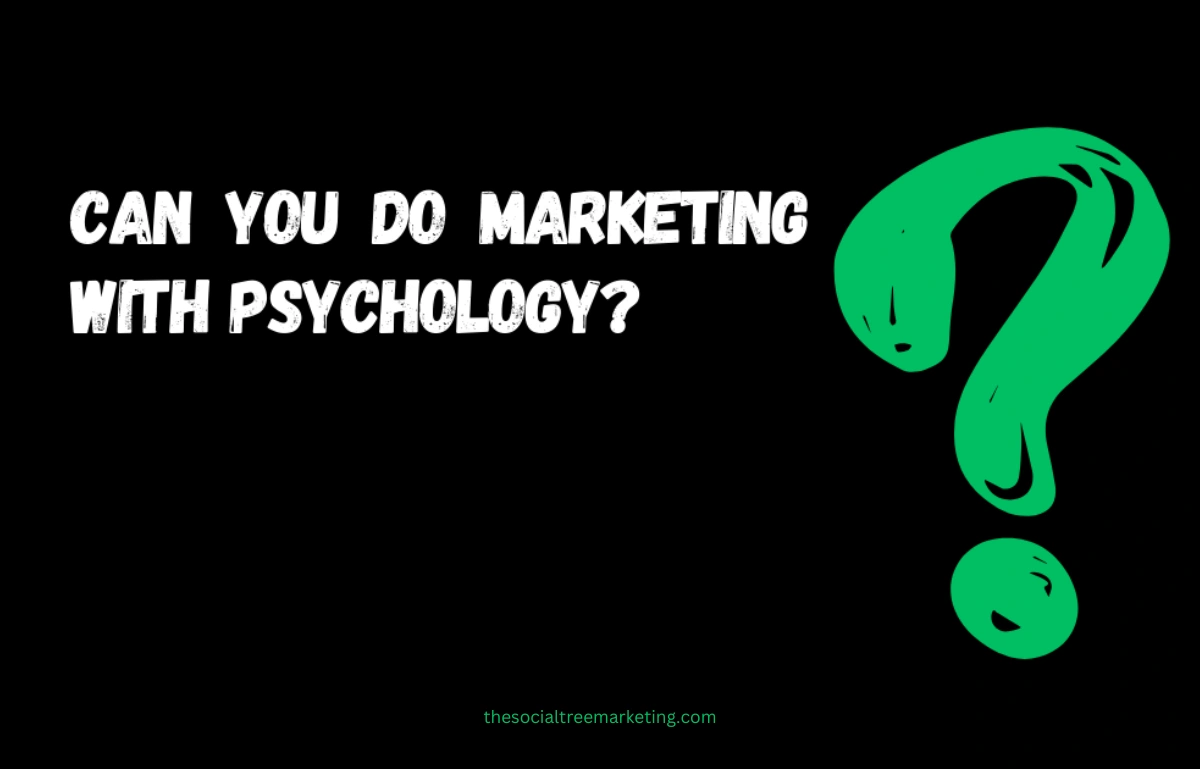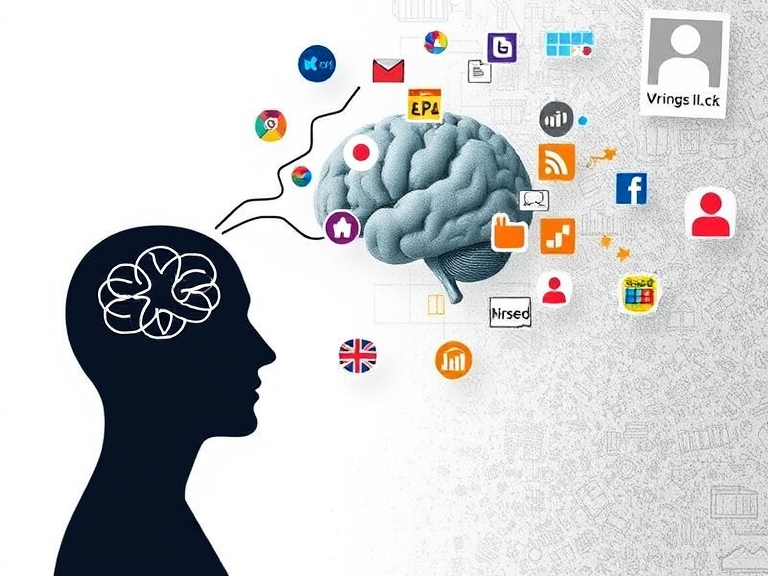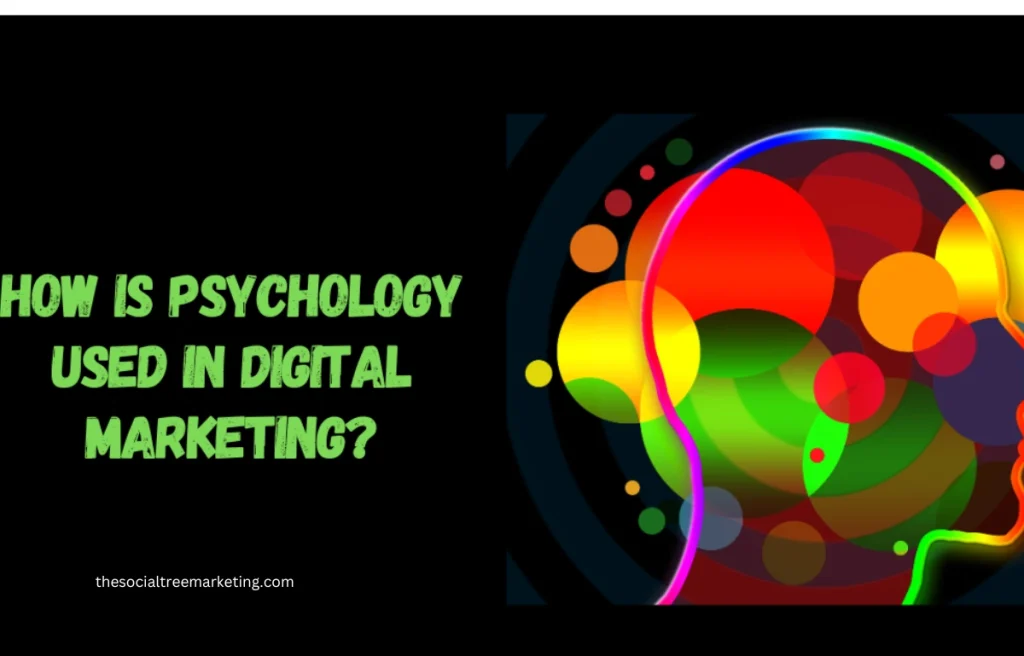So, how do you see an ad that makes you finish scrolling or buy something you did not intend on? That is not just aimlessly—it is psychology in action. Marketers use psychological tricks to get your attention and impact your decisions. For instance, they use colors like red to create a sense of seriousness. These small tricks encourage you to take the desired action.
Advertisers also play with things like a shortage, making you feel a product is reducing, which compels you to buy rapidly. They might offer something for free to make you think you should return the favor by buying. All these strategies figure out how our brains work.
Psychology Tricks in Digital Marketing

Marketers use clever psychology tricks to make you see their stuff and get you to buy them. Here is how they do it:
Color Psychology
Imagine colors for a minute. They can impact how you feel:
Red: Makes you feel eager. Therefore, red is seen frequently in sales signs. It is like saying, hurry up and do not miss out.
Blue: Makes you feel tolerant and truthful. Banks and tech companies use blue because they want you to feel trustworthy. Have you seen how Facebook and X use blue? It is all about making you feel calm when you use it.
Social Proof
When you notice people giving likes or positive comments about a brand, it makes you feel it must be good. That is why you check out reviews before trying a new stuff. If people like it, you want to try it too.
Scarcity and Urgency
Often notice something online that says, “Only a few lefts!” or “Limited time offer!”? That is likely to make you take the desired action quickly. When you think something might stock out soon, you want to buy it soon.
Reciprocity
It is related to giving and receiving. If a company gives you something for free, like a sample, you might feel you should pay for it. So, as a result, you buy something because you got something for free first.
Anchoring
It is a trick: when you compare a product priced at $100 to one that is only $70, you will see the $70 pricing as an exciting deal. It bends the discount to appear much better than it is.
Table of Contents
ToggleCan You Do Marketing with Psychology?

Exactly! Using psychology in marketing is not just a trick. It is necessary. Here is how you can use it to your benefit:
First, understand your audience. What are your preferences? What challenges did you face? When you know them properly, you can communicate with them effectively. Next, make your content engaging and funny. Tell stories that match people.
Images are also crucial. People like pictures and videos, so use them to get attention and make your message stick. Plus, make sure your website is simple and smooth. Show reviews to the people to build trust and use countdown timers to create a sense of hurry.
Also, personalize your marketing and offer products that suit their needs. These psychological tricks can make your marketing smooth. Here are some points to understand the use of psychology in marketing:
Know Your Audience
First of all, know about your audience. What are your preferences and challenges? Collect some information and learn about them. Now, you can communicate with them effectively.
Create Compelling Content
Content is not just words on a page. It’s about telling stories to the people that match them. People remember stories. So, make your content catchy and engaging.
Use Visuals Wisely
We like images and videos. They help explain things and make your message more engaging. A quality visual can make a huge impact and make your content more attractive.
Optimize Your Website
People see your website first, so it should be simple and smooth. Show reviews on your website to build trust and add countdown timers to create a sense of hurry. And make sure it is suitable for all devices.
Personalize Your Marketing
People love feeling valuable. Personalize your content by getting customer data. Remember the names of your customers and reshape your offers to their preferences. When marketing feels special, they must respond in good manners.
Is Psychology Good for Sales and Marketing?

Definitely! Psychology can improve your sales and marketing efforts. Here are a few points to understand the importance of psychology for sales and marketing:
Building Trust
Use psychology to build it by being truthful, consistent, and precise. People buy your products more when they trust your brand. Trust can increase sales and loyalty.
Enhancing Customer Experience
A smooth customer experience can change a new buyer into a loyal customer. Use psychology to understand what makes people happy and what makes them away. Make sure they have an impressive experience with your brand.
Improving communication
Effective communication is valuable. Psychology helps you know how people feel and make decisions. Create useful messages with the help of good communication.
Boosting Conversion Rates
Eventually, you want people to act, such as buying something and clicking on your ad. Psychology helps you know what compels people and can help you increase your conversion rates.
What is Psychological Influence in Marketing?
Exactly! Our knowledge about the thoughts and feelings of customers can psychologically impact marketing. It is like using mind magic to compel someone to click on your ad and purchase something.
Here is how it works: If you show positive reviews to people, they are more likely to trust your brand. If you say something like it is a limited-time offer, people might buy it soon. And if you use emotions in your ads—like making them excited—it makes your brand more noticeable.
Emotional Appeals
Emotions make decisions. Advertisers use emotional appeals to create an emotional bond with you. It can make your brand more memorable and catchier.
Cognitive Biases
Our brains employ alternatives called cognitive biases, which can cause us to make illogical conclusions. Marketers use these prejudices. For instance, you are more inclined to purchase a thing if you observe many people buying it (the bandwagon effect).
Priming
Priming is the process of gently swaying the perceptions of others. If you want consumers to see your brand as well-off, employ fancy language and imagery. It gives them a fixed impression of your brand.
The Foot-in-the-Door method
This technique begins with a minor request to assist in the approval of a larger one later on. For example, asking someone to sign up for a free newsletter beforehand can raise the likelihood of the reason for purchase later.
The Power of Free
Everyone enjoys receiving free things. It is valuable to provide anything for free, such as a trial. It reduces the barrier to buying and gives consumers the impression that they are getting a good deal.
Conclusion
Psychology in marketing is not just a wise trick. It is crucial. Knowing how people think, and feel can help you create successful marketing. Moreover, psychology can make your marketing way more interesting. So, next time, you should prepare a plan for a marketing campaign and consider things like a psychologist.

